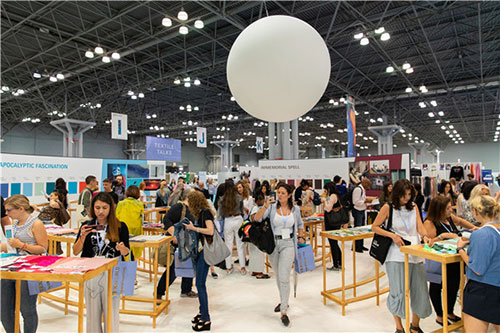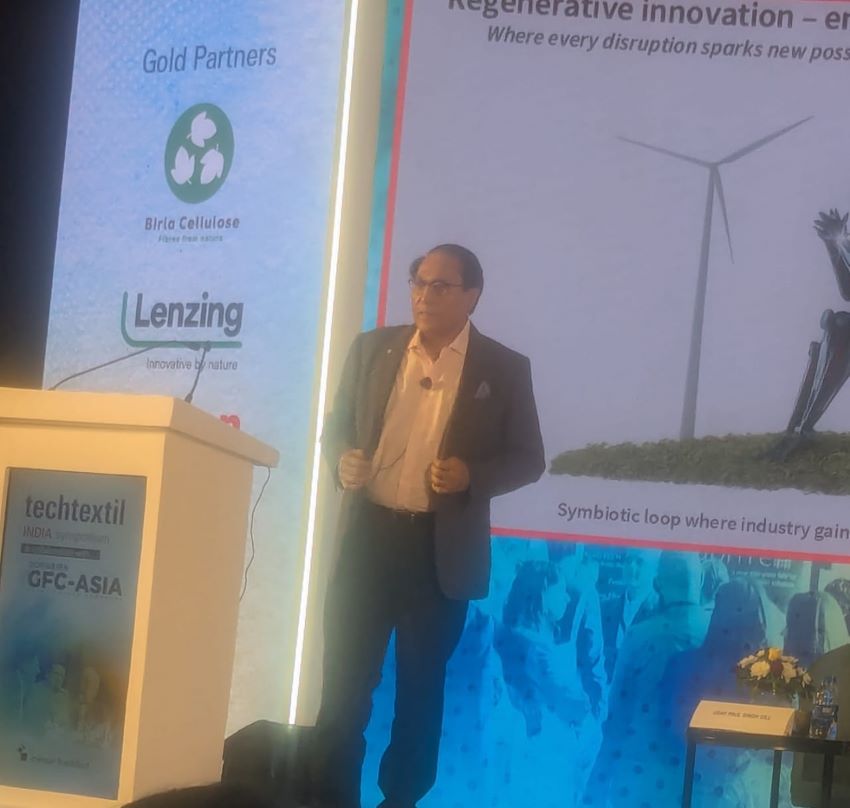"The past one and half year has been like a roller-coaster ride for the US textile market. During this period, the market witnessed several ups and downs mainly on account of the Sino-US trade war. Stakeholders Exhibitors at the recent edition of New York Show, wished this war to end quickly and the Sino-US economic and trade relations to resume as before."
 The past one and half year has been like a roller-coaster ride for the US textile market. During this period, the market witnessed several ups and downs mainly on account of the Sino-US trade war. Stakeholders Exhibitors at the recent edition of New York Show, wished this war to end quickly and the Sino-US economic and trade relations to resume as before.
The past one and half year has been like a roller-coaster ride for the US textile market. During this period, the market witnessed several ups and downs mainly on account of the Sino-US trade war. Stakeholders Exhibitors at the recent edition of New York Show, wished this war to end quickly and the Sino-US economic and trade relations to resume as before.
Desire to cooperate to sustain trade relations
Since the onset of the US-China trade dispute, the share of the Chinese textiles in the US market has witnessed a substantial drop. An enterprise from Shoaxing attending the show informed the US clients are not only downsizing their Chinese suppliers but also reducing their orders from every Chinese supplier. Small clients are adopting a wait-and-watch approach, while large clients are reducing their number of orders and cutting down the price by a large margin.
Wayne Buchen, Former Operation Senior Manager of Lacoste and Under Armor, emphasised trade relations between the US and China can never come to an end as both countries have a strong desire to cooperate with each other. This suggests that the Sino-US textile trade would not be stopped due to the ongoing trade war.
between the US and China can never come to an end as both countries have a strong desire to cooperate with each other. This suggests that the Sino-US textile trade would not be stopped due to the ongoing trade war.
Some experts feel it is much harder to purchase from other countries than from China as the country offers a superior supply chain and production technology. In addition, its complete industrial chain, infrastructures, logistics, traffic, and policy environment add value to products Made in China.
Many local American purchasers attending the Show noted that though the trade friction has resulted in loss of money, cost and communication between the two countries, it has enabled Chinese enterprises’ to accelerate their industrial structure, upgrade their products, improve their R&D level and productivity, and upgrade their technical services to strengthen their competitiveness in international competition. The trade friction is thus proving beneficial to China as it is encouraging its entrepreneurs to upgrade their facilities.
Product and service innovations to mitigate trade war effects
Many stakeholders are actively pursuing countermeasures and development solutions. They are focusing on product innovation, and strengthening their range of services. As the head of a Hubei-based home textile enterprise noted, every marketplace had developed its own fixed client group, so price changes or increase were hard to achieve. The linchpin for Chinese textile enterprises to maintain their competitiveness is to produce differentiated products so that clients cannot find substitutes of such a high cost performance ratio.
Many Chinese enterprises emphasize though American clients are capable of purchasing ready-to-wear from Cambodia and Bangladesh, they still rely on Chinese enterprises for fabric supply in the short term.












